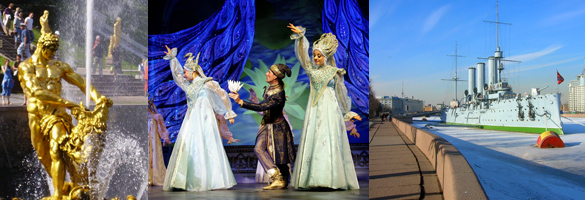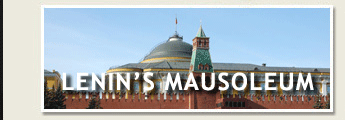 |
 |
|
|
|
||||||||||||||
|
|
|
|
||||||||||||||||
|
|
|
|||||||||||||||||
|
|
|
|||||||||||||||||
|
|
 |
 |
|
|||||||||||||||
|
|
|
|||||||||||||||||
|
|
|
|
||||||||||||||||
|
|
|
|
|
|
|
|
|
|||||||||||
|
|
Places of Attraction : Saint Petersburg
The Peter and Paul Fortress is the original citadel of St. Petersburg, Russia, founded by Peter the Great in 1703 and built to Domenico Trezzini's designs from 1706 to 1740. The fortress was established by Peter the Great on May 16 (by the Julian Calendar, hereafter indicated using "(J)"; May 27 by the Gregorian Calendar) 1703 on small Hare Island by the north bank of the Neva River. Built at the height of the Northern War in order to protect the projected capital, the fort never fulfilled its martial purpose. The citadel was completed with six bastions in earth and timber within a year, and it was rebuilt in stone from 1706 to 1740. Vasilievsky Island is an island in Saint Petersburg, bordered by the rivers Bolshaya Neva and Malaya Neva (in the delta of Neva) from South and Northeast, and by the Gulf of Finland from the West. Vasilievsky Island is separated from Dekabristov Island by the Smolenka River. Together they form the territory of Vasileostrovsky District, an administrative subdivision of Saint Petersburg. The population was 202 650 in year 2002. Situated just across the river from the Winter Palace, it constitutes a large portion of the city's historic center. Two of the most famous St Petersburg bridges, Palace Bridge and Blagoveshchensky Bridge, connect it with the mainland to the south. The Exchange Bridge and Tuchkov Bridge across Malaya Neva connect it with Petrogradsky Island. Vasilievsky Island is served by the Vasileostrovskaya station of Saint Petersburg Metro. The Winter Palace in Saint Petersburg, Russia, was, from 1732 to 1917, the official residence of the Russian Tsars. Situated between the Palace Embankment and the Palace Square, adjacent to the site of Peter the Great's original Winter Palace, the present and fourth Winter Palace was built and altered almost continuously between the late 1730s and 1837, when it was severely damaged by fire and immediately rebuilt. The storming of the palace in 1917 became an iconic symbol of the Russian Revolution. The Narva Triumphal Gate was erected in the vast Narva Square (known as the Stachek Square in Soviet years), Saint Petersburg, in 1814 to commemorate the Russian victory over Napoleon. The wooden structure was constructed on the Narva highway with the purpose of greeting the soldiers who were returning from abroad after their victory over Napoleon. The architect of the original Narva Gate was Giacomo Quarenghi. The program was meant to respond to the Arc de Triomphe in Paris, originally erected to celebrate Napoleon's victory over the Allies at Austerlitz, but the material used was a weather-resistant plaster that was never intended to be permanent. The State Hermitage Museum in Saint Petersburg, Russia is one of the largest museums in the world, with 3 million works of art (not all on display at once), and one of the oldest art galleries and museums of human history and culture in the world. The vast Hermitage collections are displayed in six buildings, the main one being the Winter Palace which used to be the official residence of the Russian Tsars. International branches of The Hermitage Museum are located in Amsterdam, London, Las Vegas and Ferrara (Italy). The Hermitage holds the Guinness World Record as having the world's largest collection of paintings. Strong points of the Hermitage collection of Western art include Michelangelo, Leonardo da Vinci, Rubens, Van Dyck, Rembrandt, Poussin, Claude Lorrain, Watteau, Tiepolo, Canaletto, Canova, Rodin, Monet, Pissarro, Renoir, Cézanne, van Gogh, Gauguin, Picasso, and Matisse. There are several more collections, however, including the Russian imperial regalia, an assortment of Fabergé jewellery, and the largest existing collection of ancient gold from Eastern Europe and Western Asia. The Mariinsky Theatre is a historic theatre of opera and ballet in St Petersburg, Russia. Opened in 1860, it became the preeminent music theatre of late 19th century Russia, where many of the stage masterpieces of Tchaikovsky, Mussorgsky, and Rimsky-Korsakov received their premieres. Since Yuri Temirkanov's retirement in 1988, the conductor Valery Gergiev has served as its general director. Peterhof is a municipal town within Petrodvortsovy District of the federal city of Saint Petersburg on the southern shore of the Gulf of Finland (population 64,791 (2002 census). It hosts one of two campuses of Saint Petersburg State University. A series of palaces and gardens, laid out on the orders of Peter the Great, and sometimes called the "Russian Versailles", is also situated there. The palace-ensemble along with the city center is recognized as a UNESCO World Heritage Site. Tsarskoye Selo is a former Russian residence of the imperial family and visiting nobility, located 26 kilometres (16 mi) south from the center of St. Petersburg. It is now part of the town of Pushkin and of the World Heritage Site Saint Petersburg and Related Groups of Monuments. The Catherine Palace is the Rococo summer residence of the Russian tsars, located in the town of Tsarskoye Selo (Pushkin), 25 km south-east of St. Petersburg, Russia. Saint Isaac's Cathedral or Isaakievskiy Sobor is the largest cathedral (sobor) in the city and was the largest church in Russia when it was built (101.5 meters high). It was dedicated to Saint Isaac of Dalmatia, a patron saint of Peter the Great who had been born on the feast day of that saint. The Church of the Savior on Spilled Blood is one of the main sights of St. Petersburg, Russia. It is also variously called the Church on Spilt Blood and the Cathedral of the Resurrection of Christ , its official name. The name refers to the blood of the assassinated Alexander II of Russia, who was mortally wounded on that site on March 13, 1881. Nevsky Prospekt or the Nevsky Avenue, is the main street in the city of St Petersburg. Planned by Peter the Great as beginning the road to Novgorod and Moscow, the avenue runs from the Admiralty to the Moscow Railway Station and, after making a turn at Vosstaniya Square, to the Alexander Nevsky Lavra. The chief sights include the Rastrelliesque Stroganov Palace, the huge neoclassical Kazan Cathedral, the Art Nouveau Bookhouse (Dom Knigi), half a dozen 18th-century churches, a monument to Catherine the Great, an enormous 18th-century shopping mall, a mid-19th-century department store, the Russian National Library, and the Anichkov Bridge with its horse statues. The feverish life of the avenue was described by Gogol in his story The Nevsky Prospekt. During the early Soviet years (1918-44) it was known as the Avenue of the 25th of October, alluding to the day of the October Revolution. The Nevsky today functions as the main thoroughfare in Saint Petersburg. The majority of the city's shopping and nightlife, as well as the most expensive apartments, are located on or right off of the Nevsky Prospekt. |
|
|
|||||||||||||||
|
|
|
|
||||||||||||||||
 |
 |
 |
|
|||||||||||||||
|
|
||||||||||||||||||
|
|
|
|
|
|
|
|
|
|
|
|
|
|
|
|
|
|
|
|
